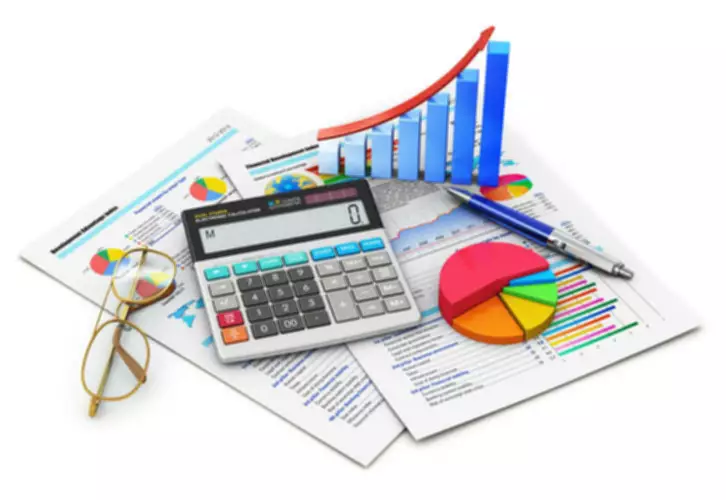Content

So, when recording allowance for doubtful accounts on the accounts receivable balance sheet, you’ll add any existing AFDA balance (from the year prior) to the adjustment balance to find the ending balance. You only have to record bad debt expenses if you use accrual accounting principles. The other option for calculating a bad debt expense formula is the ageing of accounts receivable formula. This involves taking the total amount of outstanding invoices and dividing it by your average monthly sales, from which you can calculate an estimated bad debt expense.

Practically, you are the one who decides when exactly to record bad debt in your business. Depending on your main sales method (cash or credit) and credit policy, a different timing will make sense. In cash-based accounting (the opposite of accrual accounting), transactions are recorded when cash leaves or lands https://www.bookstime.com/ on your company’s accounts. If you have accumulated bad debts, it might be time to review your receivable process. There are two ways to record bad debt expenses in your accounting statements. Most businesses will set up their allowance for bad debts using some form of the percentage of bad debt formula.
Direct write-off method
Given that the default probability is unique to each company, this method offers the most accurate way of predicting ADA. However, it’s dependent on maintaining a small, consistent customer base that can be measured, with calculation efforts increasing as your client base grows. Typically, larger businesses rely on one of the first two methods due to the complexity of running these assessments across a big customer pool. Now let’s imagine that sometime later, a client tells you they won’t be able to pay the $2,000 they owe you. This account is linked to your accounts receivable account on your balance sheet - it’s part of your liabilities.
What is a good bad debt percentage?
Lenders prefer bad debt to sales ratios under 0.4 or 40%. However, most companies prefer to have much lower numbers than this. Unless you have no bad debt, there is room to improve.
For example, if customers in a certain industry or geographic area are struggling, companies can require these customers to meet stricter requirements before the company will extend credit. The same strategy could be used to manage credit for customers that have outstanding debts over a certain amount or that are a certain number of days late on their bills. There are several other methods like Risk classification, Historical percentage, and Pareto analysis used to calculate the allowance for doubtful accounts. After writing off bad debt and considering it unrecoverable, you can still recover it from a bankruptcy trustee or a debtor who has decided to make a settlement. There could be several reasons for missing out on the payments like financial difficulty, customers wilfully engaging in fraud, etc.
What is the Treatment of Bad Debt as per Accounting Standards?
Though working as a consultant, most of her career has been spent in corporate finance. Helstrom attended Southern Illinois University at Carbondale and has her Bachelor of Science in accounting. Allowance for doubtful accounts is not a temporary account as they get carried forward to the next financial year. Biltrust’s Order-to-Cash Automation Software reduces DSO and your AR team’s manual work, optimizes your cash flow and more. Everything in 2020 changed for organizations, from AR departments having to deal with evolving work environments to low cash flow and more. The Billtrust Blog offers informative accounting insights, advice on automated AR best practices, tips and tricks, and strategies to optimize your AR processes.
- For example, at the end of the accounting period, your business has $50,000 in accounts receivable.
- If you do a lot of business on credit, you might want to account for your bad debts ahead of time using the allowance method.
- A bad debt expense is a portion of accounts receivable that your business assumes you won’t ever collect.
- ADA is a type of contra asset account used to reduce your account receivable balance (“contra asset” referring to an asset account where the account balance is a credit balance).
- A contra-asset account means its balance will either be zero or negative (credit balance).
- Because uncollectible accounts threaten your cash flow, it is important to keep an eye on them.
- Allowance for doubtful accounts falls under the contra-asset section, which means it will either be zero or negative.
Typically, the allowance method of reporting bad debts expenses is preferred. However, it’s important to know the differences between these two methods and why the allowance method is generally looked to as a means to more accurately balance reports. One company changed its approach to bad debt management after two major clients defaulted on their bills, leaving the company facing tens of thousands of dollars in losses. To make matters worse, the company had also dedicated considerable staff time and resources trying to collect on those bad debts with no success.
How to record the bad debt expense journal entry
As a result, the lender may write off the debt, which reduces their profits and may impact their financial health. Alternatively, the lender may attempt to recover the debt through various means, such as legal action or debt restructuring. Managing bad debt is crucial for lenders, as it can have significant consequences for their business. Whether bad debt expense is an operating expense is a contentious issue, and whether such a debt expense is an operating expense is a question that requires extensive consideration.

At a basic level, bad debts happen because customers cannot or will not agree to pay an outstanding invoice. This could be due to financial hardships, such as a customer filing for bankruptcy. It can also occur if there’s a dispute over the delivery of your product or service. While one or two bad debts of small amounts may not make much of an impact, large debts or several unpaid accounts may lead to significant loss and even increase a company’s risk of bankruptcy. Bad debts also make your company’s accounting processes more complicated and, in addition to monetary losses, take up valuable staff time and resources as they unsuccessfully try to collect on the debts. Bad debt expense is an accounting term that refers to the estimated amount of uncollectible debts that a business is likely to incur during a given period.
Two Approaches to Estimate Bad Debt
The first method involves examining credit sales (or the percentage of total collected A/R) and using historical collection data to determine how much of your invoices are written off, on average. bad debt expense calculator That’s why payment reminders are key in your account receivable process and especially in recognizing bad debts. Once you have your result, you can project it onto your current credit sales.
This contra-asset account reduces the loan receivable account when both balances are listed in the balance sheet. For instance, let’s say you wrote off an account earlier in the year, but then the company paid unexpectedly. Notice, other than the amount and description, this is the same entry we made under the percentage of sales method. In some cases, companies may also want to change the requirements for extending credit to customers.